Natural/Organic/Not Man-made Chemical Soil Additives
msdorkgirl
8 years ago
Featured Answer
Sort by:Oldest
Comments (30)
msdorkgirl
8 years agoRelated Discussions
Organic Garden Soil / Raised Beds?
Comments (18)deerbones, what you want to fill that garden bed is a soil composed of about 45 percent sand, 45 percent clay, and 10 percent organic matter. Silt is somewhat difficult to get these days, or at least uncontaminated silt. I have found, on occasion, bagged "topsoil" that comes close to that I just described but it takes careful looking. If a landscape business sells soil in bulk ask about getting a 1 cup sample to test and use this test to see if it comes close to what you need. Soil test for organic material. From that soil sample put enough of the rest to make a 4 inch level in a clear 1 quart jar, with a tight fitting lid. Fill that jar with water and replace the lid, tightly. Shake the jar vigorously and then let it stand for 24 hours. Your soil will settle out according to soil particle size and weight. For example, a good loam will have about 1-3/4 inch (about 45%) of sand on the bottom. about 1 inch (about 25%) of silt next, about 1 inch (25%) of clay above that, and about 1/4 inch (about 5%) of organic matter on the top....See MoreWhy specifically do organic gardeners avoid chemical fertilizers
Comments (63)A lot of interesting info here, and obviously plenty of room for debate. I don't have near the knowledge many of you do but I can share my personnel experience as a hobbyist gardner. For several decades I have refused to use pesticides, just basically not liking the idea of using poisons. Knowing that a healthy plant is more successful in fighting disease and pests I would use chemical fertilizers to help keep my plants healthy. Well unfortunately, or maybe fortunately I was forced into early retirement and the last couple of years I have had a lot more time for hobby stuff. I started composting, having readily available lots of leaf and green matter in the yard. Then I started learning more about soil biology by poking around the web (that's how I found this place). So I decided to up the game and go 100% organic, relying only on my compost, and compost teas. My plants were easily just as if not more healthy than previous years, but the thing I noticed most was it seemed I had more beneficial insects in the garden. A couple of years I tried to introduce lady bugs for the occasional aphid problem. They would just fly away never to be seen again. This year no aphids but I kept seeing the random ladybug. Additionally I have found it hugely satisfying and feel a more complete cycle between my garden and my table. I am increasing my knowledge and experience of composting, and feel my compost is becoming better with every batch by adding simple things such as alfalfa and seaweed (always take my pack when I visit the ocean). Having a microscope I have also been able to see for myself the change and increase of microbial life in my soil and assume that will lead to a more healthy relationship between plant and soil. Now I have to find someone to give my leftover chemical ferts to.....See MoreSoil, compost, mulch and additives
Comments (83)Pnbrown: Who says it's ok digging Forrest soil? In the other thread I mentioned that I do take topsoil out if the woods for my garden, but my garden I never till.. I am taking small amount of topsoil maybe a few buckets full.. I am not digging up the whole forest for my garden... Maybe large farms it is unrealistic... But for us small gardeners i believe it is superior! If the large farms had the money I'm sure they would do it as well! Most farmers do till in manure and other amendments.. So they already are importing large quantities of amendments.. The only difference to my method is you aren't tilling it in, you are leaving it on top of the soil and planing in that.. Now you mentioned covering sod with soil is a gold idea is you planned ahead, but it is unrealistic for someone wanted a garden in April/may.. I cannot disagree with you more.. Tilling is much more labor intensive and inconvienent than merely piing up soilnandbcompost in a raised be and planting? Why couldnt you use my method and and plant in April/may? In fact i think my method is alot easier, quicker, convenient, better for the environment and better for the soil.. Joe...See MoreRoses and stuff...
Comments (179)Hi All, I'm not a gardener, but I want my wife's roses and efforts in our flower beds to be a success :) Unfortunately, she's not much of a gardener either, so we're seeking some help. I have two things I need help with and having read through this page I can tell there are some folks here that can help and might even be willing to! :) 1 - Something is eating our roses. I took a few pictures of these little 1/2" inch black caterpillars that I caught in the act. Tent worms? That's my guess after a little Googling. If so, is there a best way to get rid of them and recover from the damage? Sorry they weren't very photogenic with my cell camera! 2- I want to cover a 6' stone wall with some sort of ivy or perennial flowering vine that will run and be low maintenance. We put the wall in a few years ago and our best efforts to set in a good foundation are still showing gaps in the upper stones. I don't want to dig out the tree and bushes that are in the ground that the wall is holding in, I don't think the wall will ultimately fail (at least not in my lifetime) but I do want to hide the stone gaps. Any ideas? Thanks in advance!!!! I also have a question on something I picked up from higher in the chain . . . what's the magic with marigolds and getting rid of garden pests? Thanks in Advance!...See Morestrawchicago z5
8 years agojim1961 / Central Pennsylvania / Zone 6
8 years agomsdorkgirl
8 years agomsdorkgirl
8 years agostrawchicago z5
8 years agolast modified: 8 years agostrawchicago z5
8 years agolast modified: 8 years agostrawchicago z5
8 years agostrawchicago z5
8 years agostrawchicago z5
8 years agomomscottagegarden
8 years agostrawchicago z5
8 years agolast modified: 8 years agomomscottagegarden
8 years agostrawchicago z5
8 years agolast modified: 8 years agostrawchicago z5
8 years agomsdorkgirl
8 years agojim1961 / Central Pennsylvania / Zone 6
8 years agostrawchicago z5
8 years agomsdorkgirl
8 years agojim1961 / Central Pennsylvania / Zone 6
8 years agolast modified: 8 years agomsdorkgirl
8 years agojim1961 / Central Pennsylvania / Zone 6
8 years agolast modified: 8 years ago
Related Stories

LANDSCAPE DESIGNNatural Swimming Pools: More Beauty, No Chemicals
Keep your skin and the environment healthy with a pool that cleans itself, naturally
Full Story
GARDENING GUIDESThe Poop Scoop: Enrich Your Soil With Good Old Manure
Get over the ick factor already — this natural super-ingredient for soil has so many benefits, you'll wonder why you ever went chemical
Full Story
GARDENING GUIDESHow to Stop Worrying and Start Loving Clay Soil
Clay has many more benefits than you might imagine
Full Story
GARDENING GUIDESWeed War: When and How to Use Chemical Herbicides
Before you spray, arm yourself with knowledge about which weed killers — natural or synthetic — are right for your yard
Full Story
FARM YOUR YARDHow to Get Good Soil for Your Edible Garden
The nutrients in your soil feed the plants that feed you. Here are tips on getting it right — just in time for planting season
Full Story
GARDENING GUIDESGrow a Beautiful Garden in Alkaline Soil
Got alkaline soil? Learn how to manage it and the many beautiful plants that will thrive in this ‘sweet’ soil
Full Story
GARDENING GUIDESHow to Pick a Mulch — and Why Your Soil Wants It
There's more to topdressing than shredded wood. Learn about mulch types, costs and design considerations here
Full Story
GARDENING GUIDESGardening Solutions for Heavy Clay Soils
What’s a gardener to do with soil that’s easily compacted and has poor drainage? Find out here
Full Story
GARDENING GUIDESGet the Dirt on Your Garden’s Soil
Understand how your soil supports your plants so you can ensure your garden’s success
Full Story
GARDENING GUIDES10 Solutions for Soggy Soil
If a too-wet garden is raining on your parade, try these water-loving plants and other ideas for handling all of that H2O
Full Story




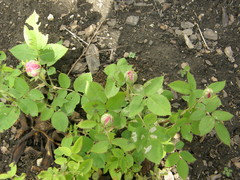
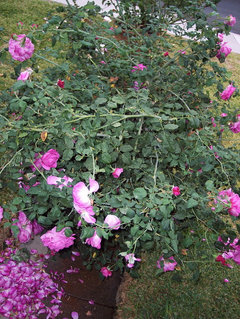

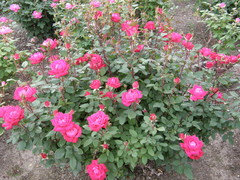
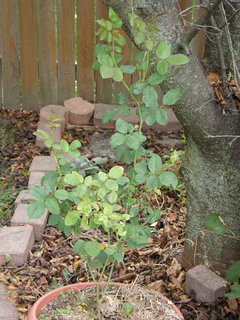




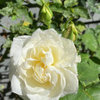
strawchicago z5